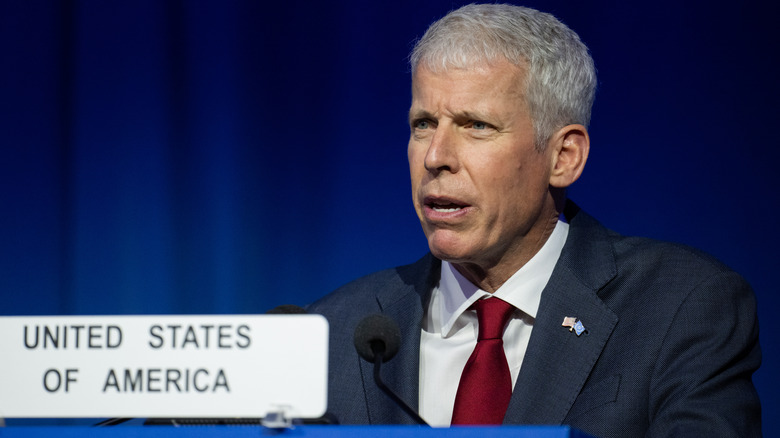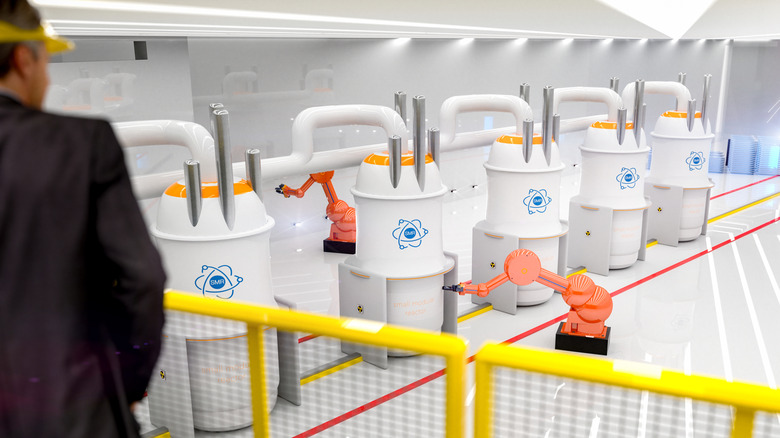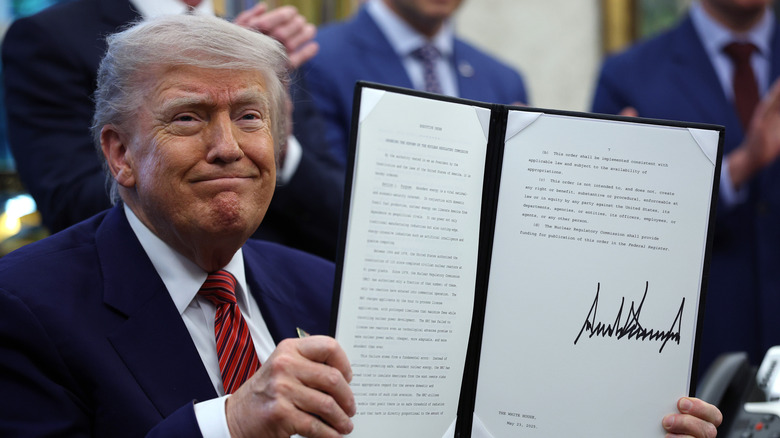The Future Of Nuclear Reactors Is Making Its Way To The US
America has a checkered history with nuclear power. Stemming from the Three Mile Island accident in 1979, safety fears surrounding nuclear energy have curtailed the country's development of commercial nuclear reactors. Ultimately, from 1977 until 2013, there were no new construction starts for nuclear power stations. Yet, the country remains the world's largest producer of nuclear power, generating close to 30% of the world's total nuclear output. It's also the third biggest method of power generation in the U.S., producing 18% of America's electricity; only natural gas and coal add more power to the grid. However, the slump in investment in nuclear power may be coming to an end.
Building on President Trump's four executive orders to revitalize the sector, Chris Wright, the U.S. Secretary of Energy, recently announced a "pathway" to streamline the development and deployment of advanced nuclear reactors. Speaking at the International Atomic Energy Agency's (IAEA) General Conference, Secretary Wright cited the growing demand for affordable power and the rise of high-power demand industries like AI as driving forces behind the strategy change. He said, "We established an expedited pathway to approve advanced reactors, set standards to evaluate new construction licenses within 18 months." The goal is to deploy Small Modular Reactors (SMRs) as part of President Trump's plan to add 300 gigawatts of nuclear capacity to the grid by 2050.
The key to that future lies in the aforementioned SMRs, a new generation of reactors that are designed to be smaller, safer, and faster to build.
The technology leading the charge
For those of us who associate nuclear power stations with behemoths like Chernobyl or Japan's Kashiwazaki-Kariwa plant, the new generation being planned by the U.S. might come as a surprise. Rather than being large, static plants, the U.S. Government sees the future of nuclear energy as being smaller in scale. The President's executive order details the need for the U.S. to develop advanced Generation III+ reactors. These include small modular reactors (SMRs) and microreactors. The executive order also notes that these should be developed in both stationary and mobile formats to build greater resilience into critical electrical infrastructure.
One of the cornerstones of the executive order is the use of SMRs. As the name suggests, these are small reactors with a power capacity of up to 300 megawatts per module. Because of their small size and scalability, these can be installed in places where traditional reactors are unsuitable. The modular aspect of the design also means they can be pre-built at a factory and quickly installed on site. SMRs can also be quickly — and relatively easily — installed in rural areas with limited electrical infrastructure.
Microreactors are an SMR subclass; these are smaller reactors that typically generate a maximum of 10 megawatts. Microreactors have many of the same advantages as larger SMRs. Additionally, they are also a cost-effective solution for isolated areas and can also be used for backup power or as a replacement for diesel generators. Incidentally, the U.S. Army is developing a microreactor.
What it means for the US
For the U.S., the renewed focus on nuclear power isn't just about clean and reliable energy sources — it's also about jobs and security. In employment terms, the nuclear industry already employs close to 500,000 workers. Additionally, these are well-paid jobs with salaries around 50% higher than comparable jobs within other energy generation sectors. However, the development of SMRs is still a work-in-progress, and these are seen as critical for the future of the industry. President Trump further indicated America's commitment to their development when he announced a $900 million package, split across two tiers, to support the development of SMRs. The majority of the funding is intended to support the development of new commercial projects. The remainder is to be used to help deployments by smoothing out prohibiting factors like design and supply chain issues.
Security is also a driving force behind the re-emergence of the U.S. nuclear power sector. Historically, both the U.S. and Europe were central in developing international safeguards designed to prevent nuclear proliferation, an influence that has waned in recent years. With the advanced technology being developed and the moves by the U.S. Government to support and encourage the sector, the aim is to restore the U.S. influence across global energy markets.
Despite nuclear fusion records continuing to be broken, it's still considered a technology for the future. In the meantime, SMRs may just be the bridge that keeps our lights on as we move away from fossil fuels.


